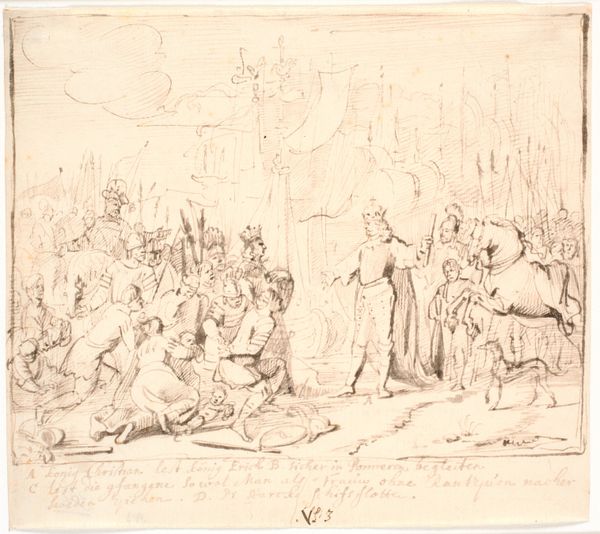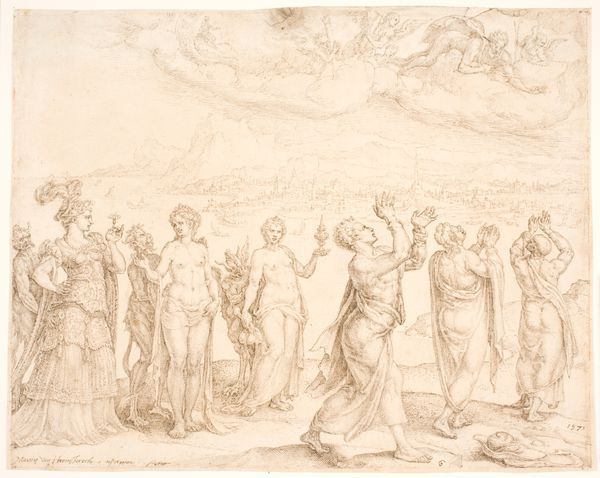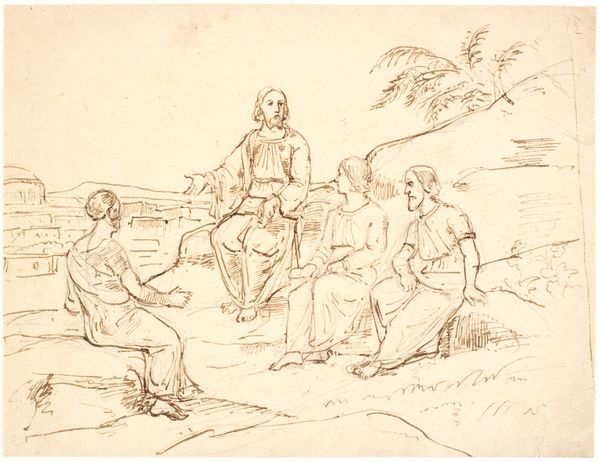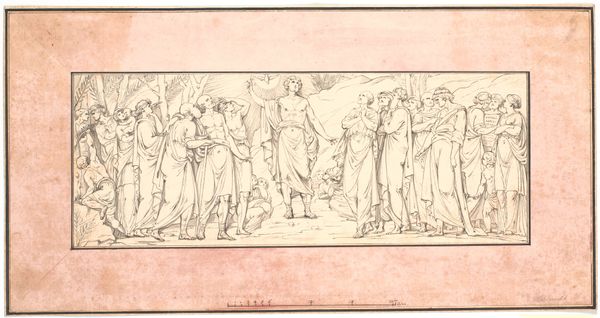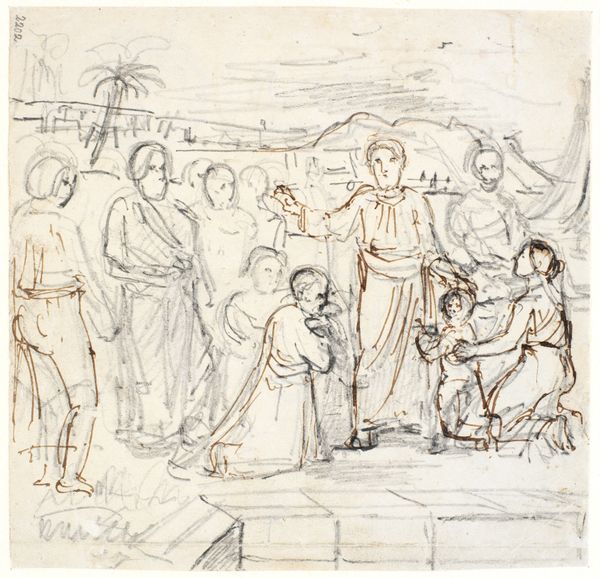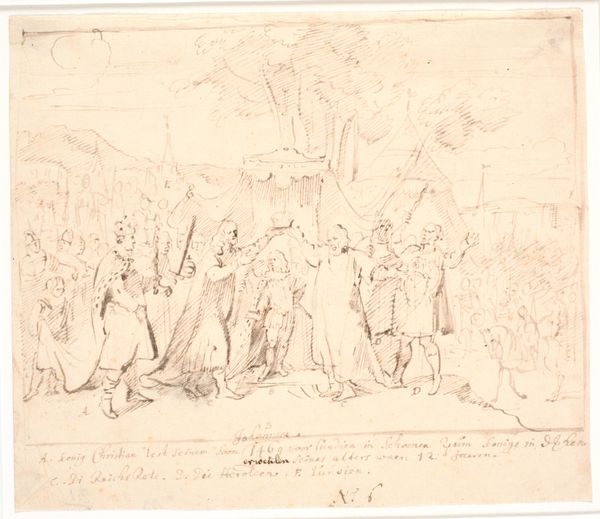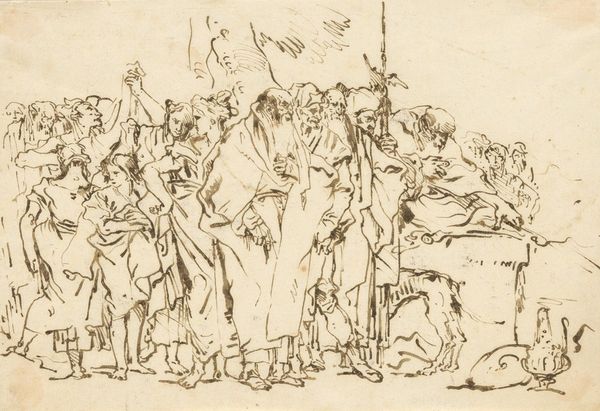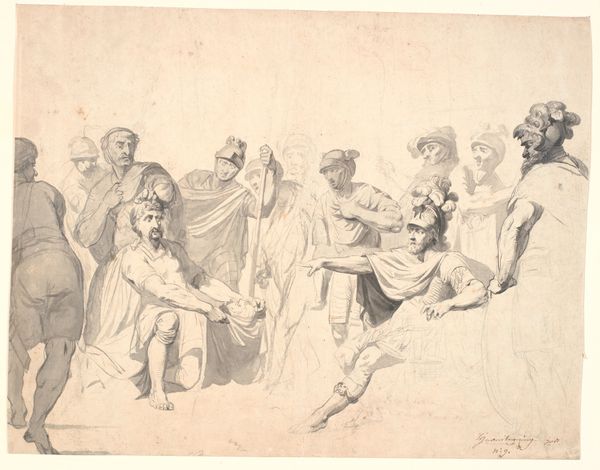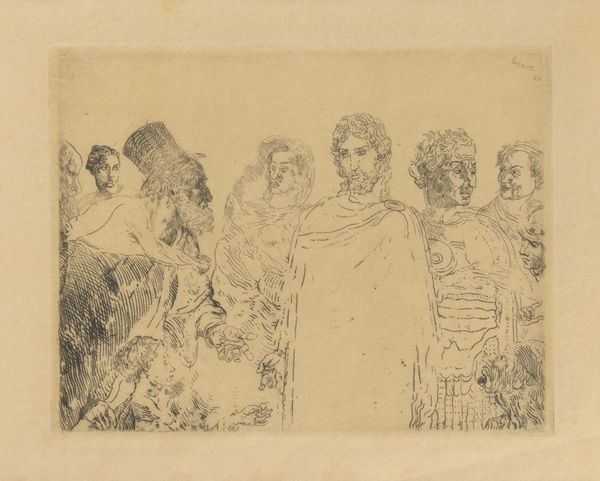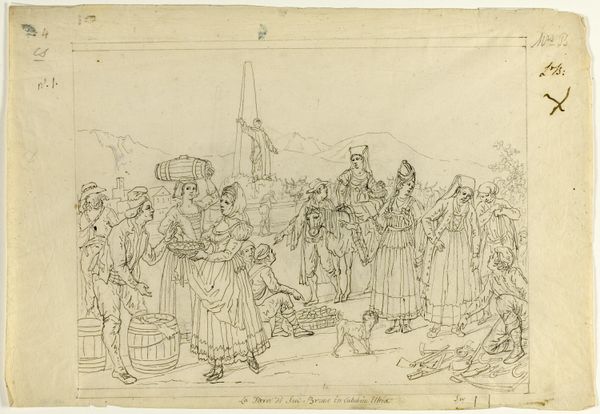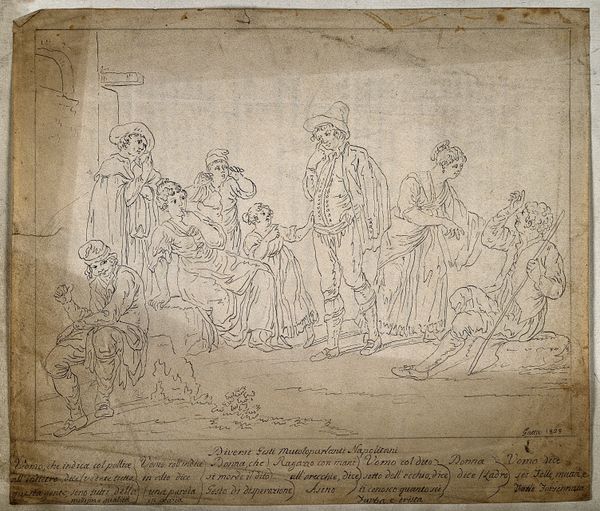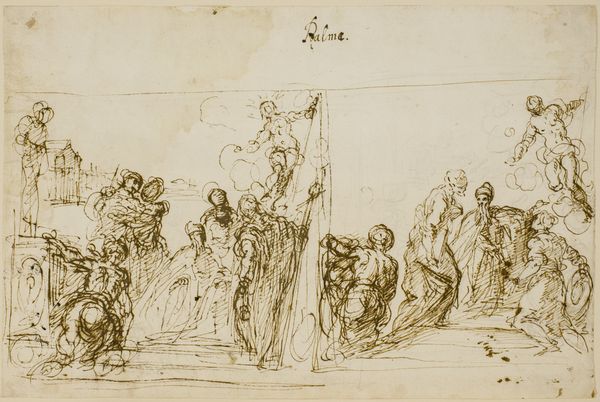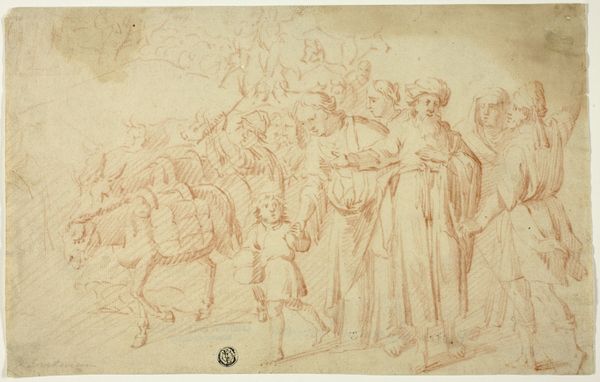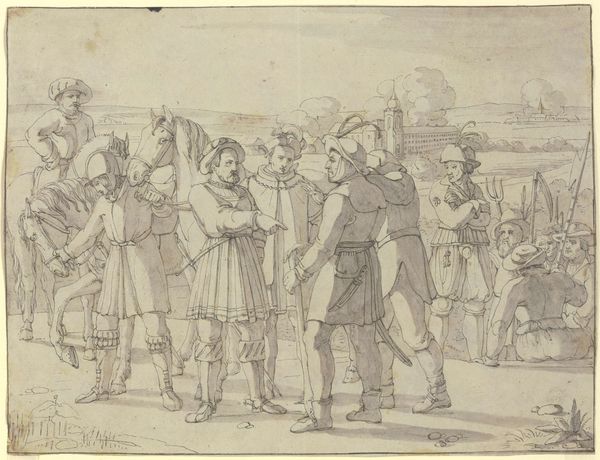
Historisk scene: En konge omgivet af flere personer 1831 - 1852
0:00
0:00
drawing, ink, pencil
#
drawing
#
narrative-art
#
landscape
#
figuration
#
ink
#
romanticism
#
pencil
#
history-painting
Dimensions: 340 mm (height) x 462 mm (width) (bladmaal)
Editor: This is Dankvart Dreyer's "Historisk scene: En konge omgivet af flere personer," created sometime between 1831 and 1852 using pencil and ink. It feels… staged, almost theatrical, even with the landscape backdrop. What do you see in this piece, beyond the obvious historical narrative? Curator: The "stage" is key. Think about the power dynamics being visually constructed. The king, central and slightly elevated, orchestrates a scene. But who benefits from this performance, and at whose expense? Romanticism, even when depicting historical subjects, wasn't neutral. Editor: I hadn't considered it as a "performance" exactly, more like a… well, a depiction of authority. How does this relate to Dreyer’s other work? Curator: Exactly! And depictions are constructed, aren’t they? Dreyer often explored the relationship between humanity and landscape. Here, though, the landscape seems secondary. It's the power relations between these figures that truly command our attention. Consider, too, the implicit narratives here – who is included, who is excluded, whose story is being told, and, crucially, who is telling it. Do the figures appear unified in support, or do you see hints of something more complex? Editor: I see. There are definitely faces that look troubled or wary. It makes you wonder what "history" is actually being presented and who controls that narrative. Curator: Precisely! And how can we, as contemporary viewers, deconstruct these constructed narratives and create space for other voices, perspectives, and experiences that were historically marginalized or erased. Editor: This has completely changed how I see this drawing. I’m not just looking at a historical scene, but a statement about power and how history itself is a performance. Curator: Indeed. By understanding these dynamics, we can critically engage with both the past and the present. And isn't that the most important thing we can do?
Comments
No comments
Be the first to comment and join the conversation on the ultimate creative platform.
